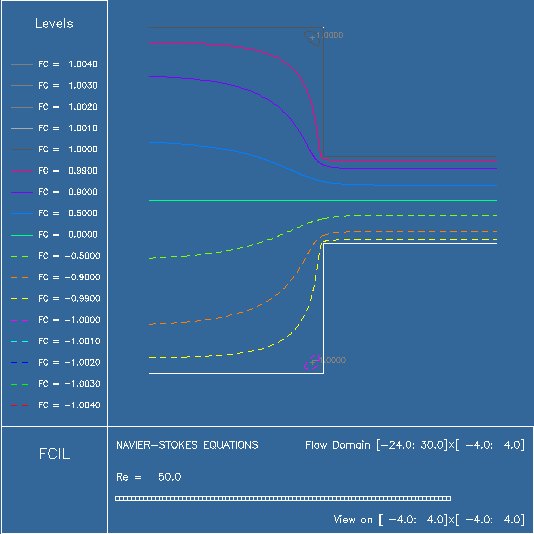Sub-Optimal Control of Transient Non-Isothermal Viscoelastic Fluid Flows
Non-Newtonians fluids, among them viscoelastic fluids, exhibit some remarkable phenomena, which is due to their "elastic" nature. These fluids keep memory of their past deformations, and their behaviour is a function of these old deformations. Examples of viscoelastic fluids are oil, liquid polymers, glycerine etc. Computer simulations have become an important tool for the ingeneering of polymer processing. These simulations offer the means to optimize polymers processes such as injection molding and extrusion for example. The injection molding process can be modelled by simulating the flow of a viscoelastic fluid in a contracting channel (the 4-to-1 contracting channel is a benchmark problem in viscoelastic fluid flows simulations). During the industrial process, defaults usually occur. One of the reason is the presence of vortices in the corners of the contraction, see Fig 1. This phenomenon does not occur for Newtonians fluids at the same Reynods numbers.


As we consider transient flows, optimal control strategies can be unfeasible on account of the size of the system of governing equations. Therefore sub-optimal strategies are required. We decide to utilize the so-called "instantaneous control" strategy. Instantaneous control is based on time discretization of an evolutionnary set of equations with optimal control problem being solved at each time instance. Although the strategy violates the Bellmann principle and the HJB appraoch, it can be effective in the sence of control design, and be justified as a receding horizon technique.
To eliminate the vortices in the flow, we minimize a cost functional depending on the flow parameters and expressing the presence of vortices. An efficient cost functional turns out to be:

To minimize J, an optimality system using Lagrange multipliers is derived. The instantaneous control strategy implies minimizing Jn at each time instance, where Jn is the equivalent of J, but at one time tn.

- K. Kunisch, X. Marduel, Optimal Control of Non-Isothermal Viscoelastic Fluid Flows
- X. Marduel, K. Kunisch, Sub-Optimal Control of Transient Non-Isothermal Viscoelastic Fluid Flows